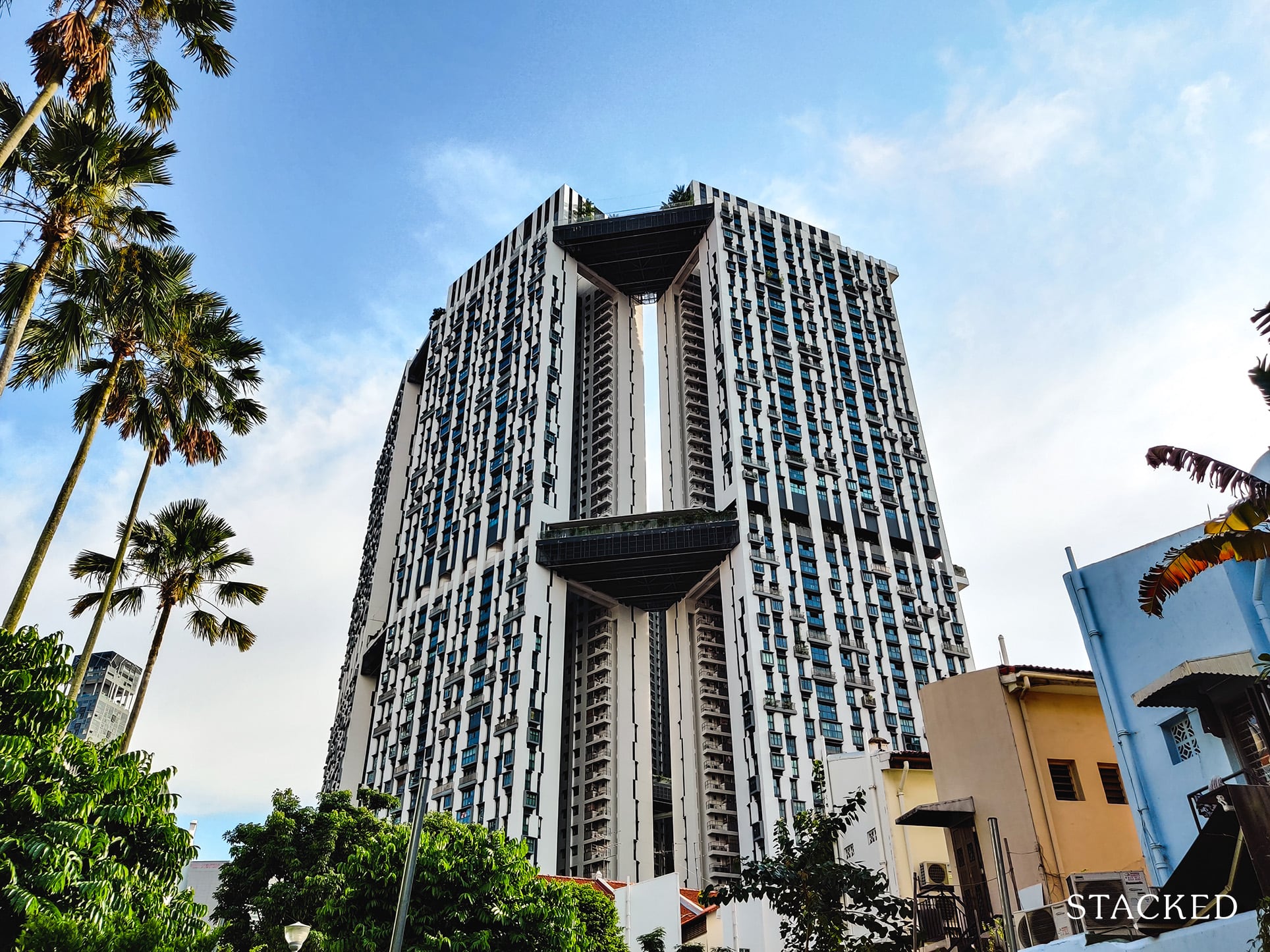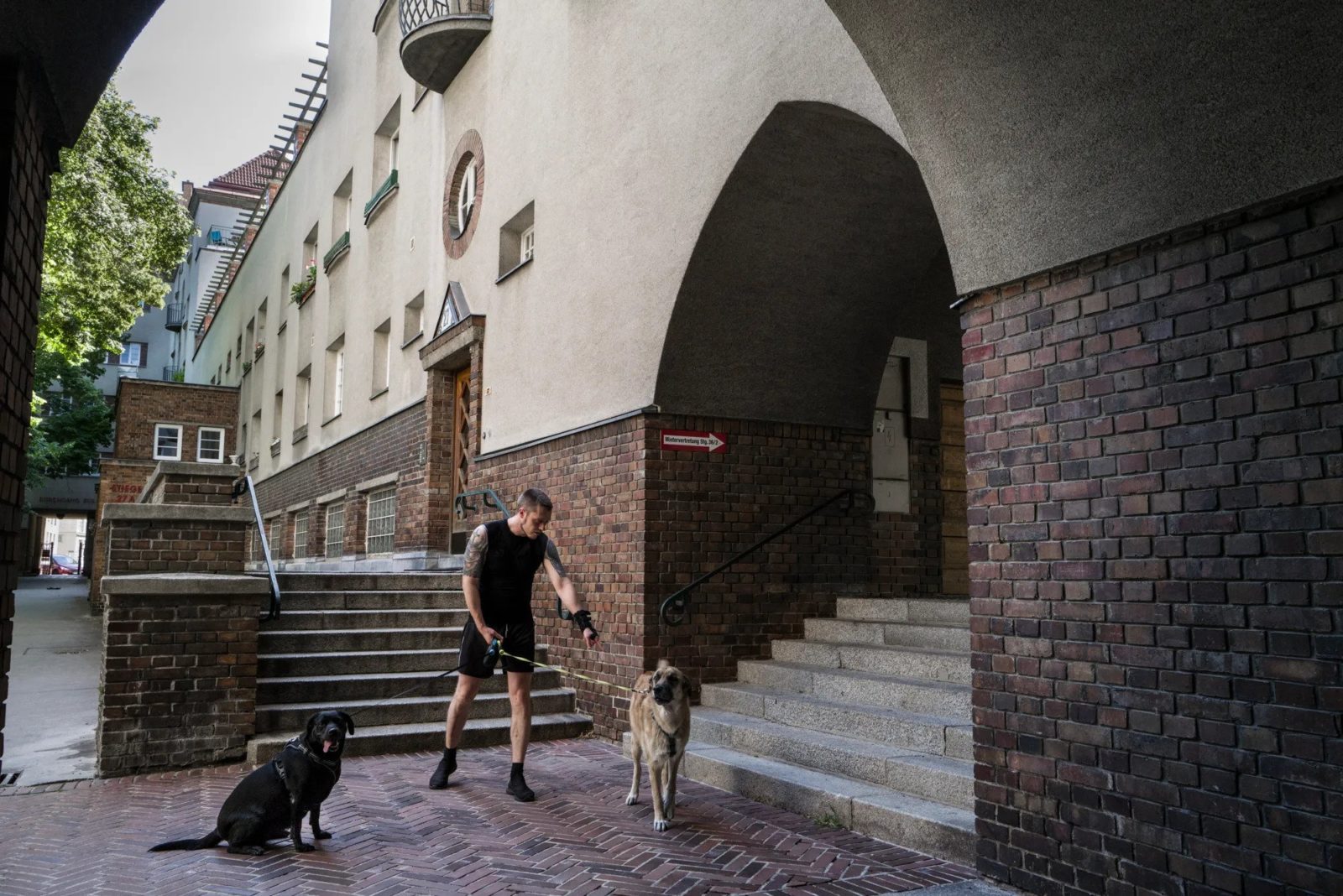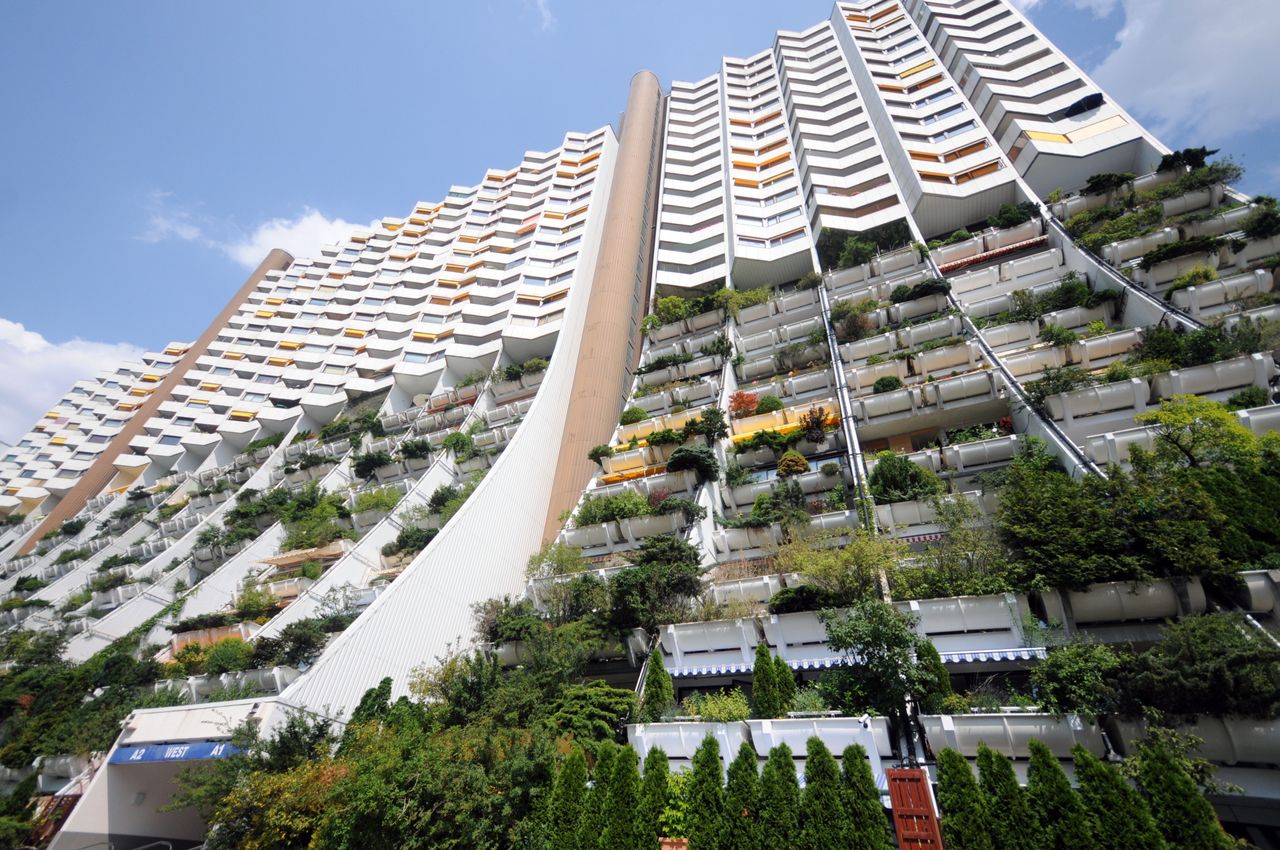Rethinking affordable public housing: Vienna's successful model and what Singapore can learn


Imagine a city where public housing doesn’t just meet basic living standards, but can be architectural masterpieces as well, scattered in prime locations throughout the city. And no, we’re not talking about Singapore.
Welcome to Vienna, Austria, where public housing isn’t a symbol of poverty, but a celebration of the city’s rich history, culture, and commitment to social equality. In contrast to the usual narrative, here, public housing isn’t just for those who can’t afford anything else. It’s a choice that people from all walks of life make. They get to live in good quality buildings, in vibrant, mixed communities, without breaking the bank.

As compared to Singapore, the general consensus is that ours are the best functioning systems to date (although some taxi drivers and coffee shop uncles will bite your head off if you try to tell them that). But rather than rest on our laurels, perhaps Singapore should look at its closest counterpart in success, and see if there’s anything worth learning:
We’re definitely not experts on the topic, but this is largely what we’ve been able to gather from various sources. For those of you in the know, please do drop us a note or comment on anything that needs changing.
To start, Vienna’s public housing is largely bankrolled by federal funds, with the city bagging about €450 million yearly from taxes and housing contributions from employed Austrians. If there’s a deficit, the city steps in. Public funds support most new home construction in Austria, except luxury properties and second homes.
As such, Vienna’s housing program has a knack for keeping the private market in check. Given that most of the city’s housing is either city-owned or subsidised, private landlords compete with public housing, keeping rents realistic. Plus, most Viennese live in municipal or subsidized housing, which helps shake off any stigma associated with public housing.

And perhaps more interestingly, Vienna doesn’t skimp on architectural quality while making homes affordable for most residents. Large-scale projects are funded through a developer competition. A diverse jury of city representatives, architects, builders, and housing law experts select designs based on cost, quality, and eco-friendliness. This competitive process has brought down construction costs by around 20per cent and sparked innovation like the car-free estate and a community planned by women architects.
Overall, the housing for tenants* comes in three main forms:
There’s old housing, which is owned by landlords and rented out. This refers to housing generally built before 1953 (in some cases before 1945). The rental rate that the landlord can charge is pegged to the Consumer Price Index (CPI), which is a general measure of inflation.
So while rent is controlled, it’s allowed to at least rise with inflation, and there’s still some incentive to be a landlord.
As of 2023, the average rental rate for old housing is around S$1.18 psf**. However, the landlords can demand higher rents for certain justified additions, which we understand is often the case. Tenants can dispute this by bringing it to the authorities, though the process (which may involve legal action) is usually time-consuming and difficult to justify.
The landlords usually take a three-month deposit.
Next, there’s association housing, which is a bit cheaper but often less central. These are run by collectives (the associations) which mirror the MCSTs in our strata-titled properties.
Rental rates average S$1.06 psf, but there’s an upfront financing contribution. This can be up to a five-digit figure, which you get back when your lease ends, at a rate of minus one per cent per year.

Finally, there’s public housing, which houses about 22 per cent of Vienna’s inhabitants. These are broadly the closes to our HDB flats, and average S$0.96 psf. This is subject to eligibility requirements just like our flats, with income limits and a requirement for “justified housing need.” We have more on that below.
*And yes, they are specifically called tenants, there’s no equivalent of the HDB debate about whether one is an owner or tenant
** Currency rates as of June 2023
The biggest similarity between Vienna and Singapore is that we don’t view public housing as a stopgap solution.
In cities like New York, London, etc. public housing is often seen as a temporary aid for people in crisis: the idea is that people should live there until they’re back on their feet, and then move on to better forms of housing.
In Singapore and Vienna, we don’t view public housing as a stopgap measure. We see it as a long-term housing solution (lifelong, in many cases). That’s why our public housing is built to extremely high standards, with proper ventilation, lifts, access to amenities, etc. It’s wildly different from cities where public housing is barely a rung above a homeless shelter.
Many of the elements of public housing in Vienna – from quality fittings, and top-end maintenance, to exercise areas – are comparable to our HDB projects. If Vienna has an edge, it’s that their 100+ year old buildings with elaborate facades are much prettier.
(Also they’re not in our jungle climate, which makes Vienna’s elaborate architecture more feasible).
Another similarity is the overall gauge of affordability. The average tenant in Vienna spends 23 per cent of their income on rent, which is very close to HDB’s 30 per cent Mortgage Servicing Ratio (MSR). Both sides seem to feel this is a percentage-of-income that reflects affordable housing.
That aside, there are some key differences to consider:
In Singapore, if you want a BTO flat, you go through the balloting process. There are extra chances given to first-timers, but it is down to a matter of luck.
In Vienna, public housing uses a waiting period: the longer you’ve been waiting to get a home, the higher up you are on the list when it becomes available. There are advantages given to long-time residents: those living in Vienna for five years count as having waited three additional months, those who have stayed for 10 years count as having six additional months, and those who have stayed for 15+ years count as having nine additional months.
Whether a waitlist is better than balloting comes down to… well, how lucky you think you are. Without the lottery-like randomness, you’re pretty much stuck to waiting until something is available, with little hope otherwise.
So if we were to do this in Singapore, most would have zero chance to get into high-demand neighbourhoods like Queenstown or Bishan. We doubt many people would give up their flats there (and especially not if they’re purely tenants, who can’t sell). You’d be waiting till you’re old and grey and still probably won’t get one.
On the other hand, some would argue it’s fairer that those who have waited longer (and stayed in Singapore longer, regarding PRs) should have a higher priority.
We’ll leave this one up to you to decide.
Compared to HDB, Vienna’s “justified need for housing” criteria seems to focus on specific situations:
This differs from HDB, which focuses on more “hard” requirements (e.g., being a Singapore Citizen or PR, or being of certain age or income, etc.)
HDB, for instance, won’t require you to demonstrate that someone has special needs, are single parents, etc. to justify owning a flat – but at the same time, HDB doesn’t appear to focus cater as much to these special need scenarios.
We’re not entirely sure which is the better system, but we do suspect it may be easier under HDB, as you don’t need to show special circumstances.
With regard to association housing, the notion of an upfront payment – followed by reimbursement at the end of the lease – would be entirely novel to Singaporeans. We’ve used conservancy or maintenance fees paid on a monthly/quarterly basis.
The notion of having to put up a five-digit figure is not one we see people being happy with, even if it would be equal to or cheaper than maintenance fees. It’s less appealing given the reimbursement loses one per cent per year (we have to factor inflation on top of that).
We don’t think the management committee of an MCST would like it either, as the ongoing costs of property management are variable. It would be quite risky to assume the upfront amounts collected are going to suffice. And to be blunt, it would be an accounting nightmare to plan how much is reimbursed each time someone’s lease ends (imagine doing this for a 600+ unit condo).
Like HDB flats, there are income ceilings involved. One difference is that in Vienna, the income ceiling rises for each person in the household. Here’s what the rates look like (at approx. exchange rates in June 2023)
These are generally lower than HDB’s ceiling of $14,000 per month.
Both Vienna and Singapore seem to have the same reasoning behind liberal income ceilings: It ensures that people from a wider range of professions and backgrounds will mingle in the same housing, rather than being capped to just lower-income backgrounds.

However, Vienna seems to use the high-income ceiling as its only real tool to ensure a mix of social classes. They don’t quite reach the same extent as HDB, such as mandating a certain number of low-income rental flats in Prime Location Housing, or breaking up racial enclaves by setting ethnic quotas (that last notion is likely to be shocking to the EU).
There is no selling your public housing on the open market in Vienna. You’re a tenant, and the state owns the property. The emphasis is purely on owner-occupancy. This means no issues with resale flats climbing to million-dollar prices.
This can be seen as a downside, if the tenants don’t have an asset to show for all the years of rent they pay. But this sort of thinking will change based on your income level.
If you do well enough to comfortably afford mortgage repayments on your flat, you’ll almost certainly prefer having the right to sell it. If you’re barely making ends meet, you’ll probably be happy not to own it, in exchange for paying much lower accommodation costs.
As such, we’re inclined to say that the system in Vienna will be better for those who are too cash-strapped to think about owning; but for the wealthier among them, the Singapore model would probably deliver higher rewards.
Beyond this, there’s the wider moral debate about whether it’s right for public housing to be sold for profit.

It’s impossible to compare the two systems fairly, because of the different nature of rental markets in Vienna and Singapore.
In Singapore, a 92 per cent home ownership rate means the majority of tenants are foreigners. Imposing rent controls will benefit more foreigners than it would locals; and given that few Singaporeans need to rent for long periods, rent control may be unnecessary market meddling.
In Vienna, it may not be feasible to allow free market rates to run rampant; not when a bigger chunk of the populace is reliant on rental housing.
That said, rent control – if it ever came to pass in Singapore – would have a knock-on effect of lowering private home prices. When landlords are restricted in what they can change, the desire to invest in properties (and pay ABSD to boot) is bound to cool.
Come to think of it, that could be a rather insidious way for the government to lower property prices, while helping to attract more foreign talent.
However, looking at both the similarities and differences can give some sense of whether we’re on the right track. We may even pick up on areas where the system can be improved.
For more perspectives and occurrences in the Singapore property market, follow us on Stacked. We’ll keep you up to date with the latest trends and news.
This article was first published in Stackedhomes.